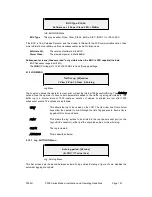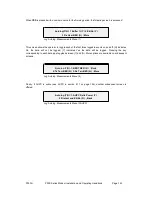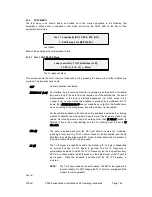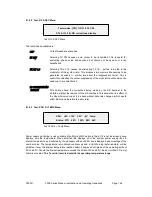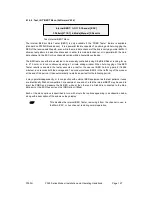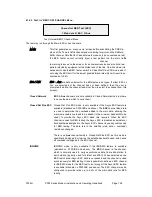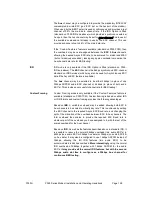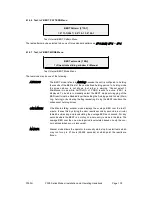
P300H
P300 Series Modem Installation and Operating Handbook
Page 115
6.12.7 Change, BUC/LNB, Rx/LNB Menu
Rx/LNB: 1:LNB Type 2:DC & References
3:SHF Frequencies
Change, BUC/LNB, Rx/LNB Menu
Options for
ÔÒÞ Ì§°»
, and
ÜÝ ú λº»®»²½»-
are only offered on L-Band modems.
Each option is defined in the following paragraphs.
6.12.8 Change, BUC/LNB, Rx/LNB, LNB Type Menu
LNB Attached[?] 1=None 2=Other 3=3.635-4.2G 4=10.95-11.45G
5=10.95-11.7G 6=11.2-11.7 7=11.7-12.2 8=12.25-12.75
Change, BUC/LNB, Rx/LNB, LNB Type Menu
The table below specifies the parameters for the listed LNB types:
Description
Low Frequency Limit High Frequency Limit
Frequency Shift
None
Modem IF +/- limits around user set SHF Frequency Shift
Other
Modem IF +/- limits around user set SHF Frequency Shift
Std C
3.635 GHz
4.200 GHz
* 5150 MHz
Std Ku
10.950 GHz
11.450 GHz
10000 MHz
10.95-11.7G
10.950 GHz
11.700 GHz
10000 MHz
11.2-11.7G
11.200 GHz
11.700 GHz
10250 MHz
11.7-12.2G
11.700 GHz
12.200 GHz
10750 MHz
12.25-12.75G
12.250 GHz
12.750 GHz
11300 MHz
As with the BUC s, the difference between
Ò±²»
and
Ѭ¸»®
is that with
Ѭ¸»®
the operator can configure
the modem to supply a 10MHz reference and a DC PSU to the LNB. With
Ò±²»
, these options are not
available.
* Note the `Std C` LNB uses a high side Local Oscillator (LO), and the received SHF Frequency is LO - IF
Frequency (not LO + IF as with most other bands). This is somewhat academic as from V3.85 onwards
this is handled automatically and the modem displays the correct SHF frequency. Note however that with
the LNB Type set to
Ò±²»
or
Ѭ¸»®
, there is no way to
manually
enter a SHF offset which uses a High
Side LO.





















